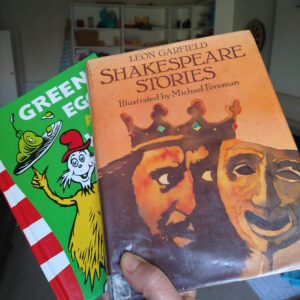Ben Dixon is back on the show! The author of the Neil Peel book series has now published Vengeance and Honour, a fun sword and sorcery adventure. He also has useful advice for writers who want to publish a children’s book, but aren’t sure about whether to try for traditional publishing or take the leap and go for independent publishing. Ben has put out books both ways, so he is the perfect guest to help me explore the advantages and disadvantages of each way to get a book out in print.
Also, this week my kids are reading Green Eggs and Ham by Dr. Seuss as well as Shakespeare Stories by Leon Garfield with pictures by Michael Foreman. Find out what the girls loved about these works by two maestros of the English language.

My interview with Ben Dixon is also on YouTube. Be sure to subscribe to the channel as I sometimes put extra videos up that don’t come through on the audio feed!
